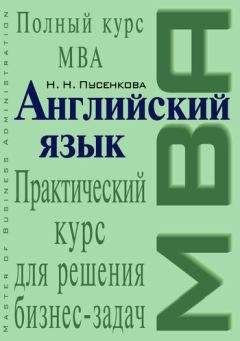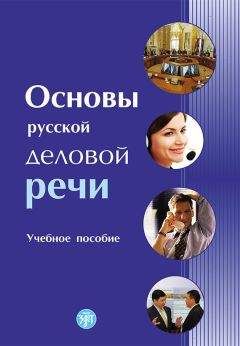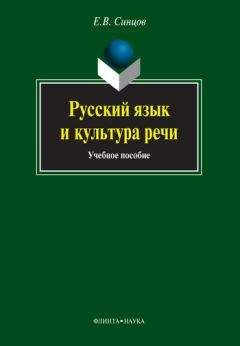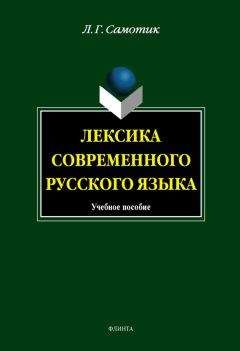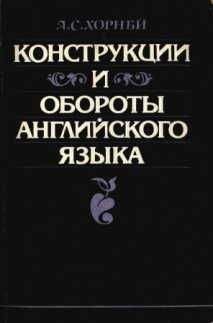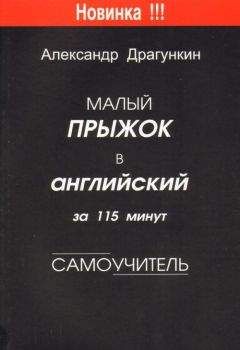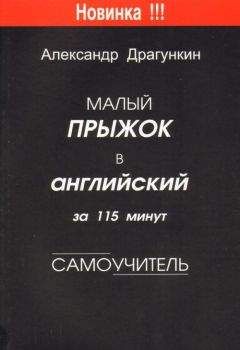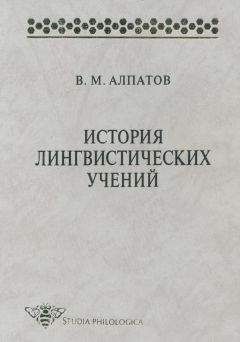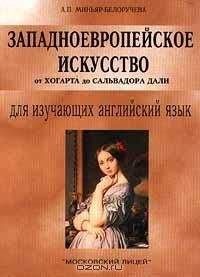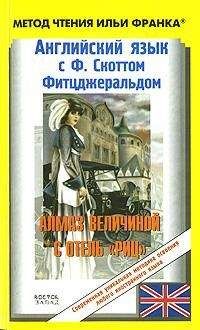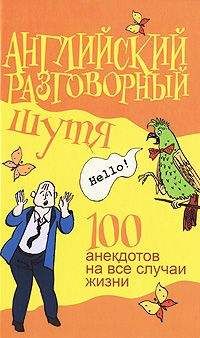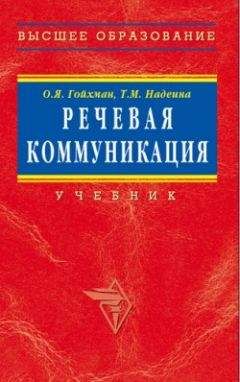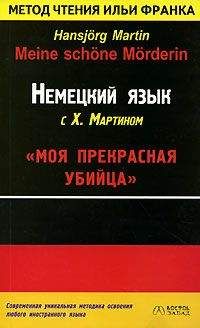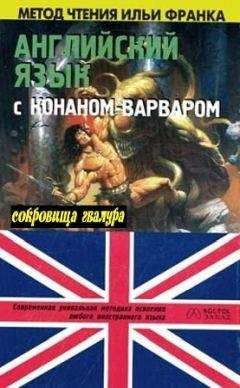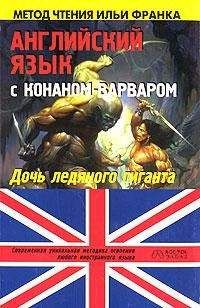А. Миньяр-Белоручева - Западноевропейское искусство от Джотто до Рембрандта
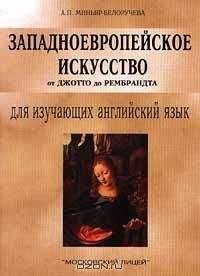
Скачивание начинается... Если скачивание не началось автоматически, пожалуйста нажмите на эту ссылку.
Жалоба
Напишите нам, и мы в срочном порядке примем меры.
Описание книги "Западноевропейское искусство от Джотто до Рембрандта"
Описание и краткое содержание "Западноевропейское искусство от Джотто до Рембрандта" читать бесплатно онлайн.
Тексты настоящего пособия охватывают пять веков западноевропейской живописи от Джотто до Рембрандта. Это дает возможность обучаемым приобрести не только лингвистические знания, усвоив обширный лексический материал, но и культурологические, поскольку последовательный хронологический переход текстов от одного художника к другому позволяет создать более или менее целостную картину развития западноевропейской искусства с XIII по XVII вв. Система упражнений направлена на усвоение лексического материала и развитие навыков устной речи.
Данная книга является первой частью цикла учебных пособий для изучающих английский язык и предназначена для студентов-искусствоведов, учащихся классических гимназий, лицеистов и всех интересующихся искусством.
Учебный центр «Московский Лицей»
пособие для изучающих английский язык
издание второе переработанное и дополненное
Москва -1999
Рецензенты:
И. И. Малинина кандидат филологических наук
Н. В. Васютина кандидат филологических наук
РЕКОМЕНДОВАНО кафедрой иностранных языков исторического факультета МГУ им. М. В. Ломоносова
5. The Laughing Cavalier is the symbol of Baroque gallantry.
6. The subjects of the Regentesses of the Old Man's Almshouse participate in a calm acceptance of the effects of time.
II. How well have you read? Can you answer the following questions?
1. What gift was Hals blessed with?
2. What were Hals's early commissions? Why were not Hals's portraits conductive to imaginative painting? How did Hals's predecessors compose their group portraits? Who could raise group portraits to a level of high drama?
3. What is the Banquet of the Officers of the Saint George Guard Company noted for? What has Hals pictured in this work of art? What ties the picture together?
4. Where is the warmth of Hals's early style seen? How old is the subject? What makes the subject the symbol of Baroque gallantry? How did Hals interpret the Caravaggesque nowhere?
5. What is the opposite of The Laughing Cavalier? When was it painted? Whom has Hals depicted in it?
6. In what painting did Hals show a different side of his character? How old was he at that time? What did the painter show in this work?
III. I. Give Russian equivalents of the following phrases:
to catch the individual in a moment of action; group portraits in alignments; unerring strokes; a moment of perception; to be blessed with the gift; effects of time; to radiate one's self-confidence; Caravaggesque nowhere; a slashed sleeve; sketchy brushstrokes; armours proclivities; a taunting smile; to be irradiated with light; snowy ruff; a dashing hat; devastated faces; to be conductive to; the predecessors of the painter; show the citizen-soldiers in the midst of the banquets; to raise the portraits to a level of high drama; to tie the picture together; a glittering portrait; militia companies; a solemn picture; component elements.
II. Give English equivalents of the following phrases:
опустошенные лица; быть наделенным даром; широкие мазки; сияющий портрет; лихо заломленная шляпа; круглый плоеный жесткий воротник; стрелковые гильдии; предшественники художника; след времени; полные, средних лет мужчины; связать картину воедино; насмешливая улыбка; изображать стрельцов в разгар веселого застолья; склонность к военному искусству; сиять самоуверенностью; групповой портрет, построенных в шеренгу людей; рукав с разрезами; эскизная манера письма; поздний период творчества; поднять на уровень драмы.
III. Make up sentences of your own with the given phrases.
IV. Arrange the following in the pairs of synonyms:
a) strokes; radiate; traditional; indicate; predecessor;
b) conventional; precursor; brushwork; shimmer; show.
IV. Here are descriptions of some of Hals's works of art. Match them up to the given titles.
1. The model was caught in the midst of a fit of insane laughter.
2. The painter had only devastated faces and white collars of the figures as component elements.
3. The climax of the painting is the taunting smile.
4. Broad brushstrokes indicate the passage of light on colour with a flash and sparkle unknown even to Rubens.
a. The Laughing Cavalier
b. Banquet of the Officers of the Saint George Guard Company
c. Regentesses of the Old Man's Almshouse
d. Malle Babbe
V. Translate the text into English.
Франс Халс – крупнейший портретист Голландии XVII в. Халс написал серию групповых портретов. Это в основном изображения членов добровольных стрелковых гильдий города Гарлема. «Портрет офицеров гильдии святого Георга» (1616) является одним из лучших. Яркие краски, непринужденное расположение фигур – нравились современникам Халса. С полотен смотрят плотные, уверенные в своих силах люди средних лет. Халс изображает их обычно в товарищеской пирушке. Групповые портреты Халса – одно из высших достижений голландской живописи.
Индивидуальные портреты Халса носят черты жанровой картины. Лучшим примером этого является портрет старухи, «гарлемной ведьмы», Малле Баббе, с совой на плече. Эскизная манера была типична для Халса. Незадолго до смерти Халс написал два групповых портрета обитателей приюта для престарелых, в одном из которых он окончил свои дни. На портретах изображены старые люди, покорившиеся времени. Монохромный колорит портретов создает особый трагизм, подчеркивая драматизм судьбы самого больного, одинокого и нищего художника, создавшего свои самые драматические произведения на девятом десятке жизни.
Искусство Халса имело большое значение для развития портрета, бытового жанра, пейзажа и натюрморта в целом.
VI. Summarize the text.
Vll. Topics for discussion.
1. Hals's style and characters.
2. Hals's artistic achievements.
Unit XVI Rembrandt (1608-1669)
Rembrandt van Rijn is the greatest Dutch master, one of the supreme geniuses in the history of art. To this day the art of Rembrandt remains one of the most profound witnesses of the progress of the soul in its earthly pilgrimage toward the realization of a higher destiny. The son of a prosperous miller, Rembrandt was born in Leiden in 1608. He was trained as a painter by two minor local artists. His rapid success promoted him to move to Amsterdam in 1631.
In 1632 Rembrandt's worldly success was assured. He had more commissions and pupils than he could accept. He married Suskia van Uylenburg, the lovely daughter of a wealthy family. He bought a splendid house, started a collection of paintings and rarities.
The universal artist dealt with many world subjects. Rembrandt painted, engraved and drew more than eighty self-portraits. Rembrandt was a master of portraiture. He created around fifty portraits.
The best group portraits painted by Rembrandt are the Anatomy Lesson of Dr. Tulp, of 1632, and The Night Watch, of 1642. In the former Rembrandt has not only painted faces, beards and lace ruffles, he has given the composition a new drama. Mystery dominates in his painting, reminding the living of their own inevitable destiny. As for The Night Watch, the members of the Company of Captain F. B. Cocq were dissatisfied with the colossal group portrait. The subject of the painting is the formation of the militia company for a parade. Through wonderful effective lightning Rembrandt has turned a narrative prose into a dramatic poetry. Real events are submerged in the symphonic tide of the colouring. All the men paid equally to have themselves depicted, yet some are sunk in a shadow, one man is concealed except for his eyes. It was inevitable that Rembrandt would lose popularity as a portrait painter, although not at once.
In Amsterdam Rembrandt began to paint in a highly imaginative Baroque style. He was influenced by Caravaggio's sharp light-and-dark contrasts and by Rubens's spiral compositions. A brilliant example of this is the Angel Leaving Tobit and Tobias, of 1637. Rembrandt has followed the book of Tobit available to him as a source in the Apocrypha. The formerly blind Tobit cured by the Archangel Raphael, prostrates himself in gratitude, while his son Tobias looks upward in wonder at the departing figure. Seen sharply from the back the angel is taken from the sight into an open cloud in a flash of light. Along with luminary effects goes a new technical freedom. The smooth, detailed early manner is gone. The forms are quickly sketched.
In 1642 Saskia died. Rembrandt's commissions slackened off as a result of his unconventional painting. In 1655 Rembrandt found himself in the midst of several financial troubles. At that period he painted The Polish Rider. The precise meaning of this painting has not been determined. Probably it is an allegory of the man's earthly journey, its many dangers and uncertain destination. In the grim and rocky valley a pool can be seen. Against the dark hill there is a hut. Near the crest there is a ruined castle. The youth rides in light, alert, with his weapons at ready. The figure and his horse stand forth in a new sculptural grandeur, intensified by the fact that many of the impastos have been laid on with a palette knife. The artist carved the pigments, especially in the dark rocks and the bony forms of the horse.
Etching played a special role in Rembrandt's vast production. He produced more than 290 etchings. For him it was an independent art form. The painter was unique in exploring various etching techniques. His etchings differed from those of his contemporaries in the loose, freehand style. Rembrandt had a large collection of drawings and prints by other artists including Man-tegna, Carracci, Titian, Raphael and Bruegel. He used their works for inspiration, but there was also an element of competition: Rembrandt tried to surpass his predecessors.
Probably in 1669, the year of his own death, Rembrandt painted the Return of the Prodigal Son. This painting stands at the ultimate peak of Christian spirituality, illuminating the relationship of the Self to the Eternity and can be interpreted as union with divine love. This parable was a favourite in the Baroque art. In Rembrandt's dark background one can distinguish two dim faces, a seated figure, and more brightly lighted the law-abiding eldest son. In a spontaneous gesture of loving forgiveness, the gentle, aged father comes into light to press to his bosom the cropped head of his ragged son. Faces are reduced. Only the hands of the father and the tired feet of the son are painted in detail. The painting is an allegory of the earthly pilgrimage of man finding rest and meaning in divine redemption. Rembrandt's language in this work is entirely that of colour and texture. Rich tans and ochres in the prodigal's worn garments are inundated by the glowing red of his father's festal cloak against the deep brown of the encompassing dark; solid masses in thick impastos gleam against the translucent glazed.
The biblical theme was very important to Rembrandt. In 1634 the artist created the Holy Family, John the Baptist Preaching, Ecce Homo. In Ecce Homo Jesus stands before Pilate, the procurator, the man who is to judge him. Pilate, convinced of Christ's innocence, presents him to the people with the words «See, the man!» – in Latin: «Ecco Homo». But the people and the priests cry out that Jesus must be crucified. The Passion of Christ was a popular subject. Rembrandt painted a series of seven pictures illustrating this episode. Abraham's Sacrifice was produced by Rembrandt in 1635. In Christ Appearing to Mary Magdalen, of 1638, Rembrandt shows Mary's shock of recognition.
Moses Breaking the Tablets was created in 1659. The Old Testament recounts that Moses led the children of Israel out of Egypt and through the wilderness. At Mount Sinai he received God's laws – the Ten Commandments – written on 'stone tablets'. But while Moses was on the mountain the people built an idol: a golden calf. When Moses came down from the mountain he saw the people dancing around the idol. In the anger he smashed the stone tablets. Rembrandt illustrates the moment just before Moses threw down the tablets.
Besides many paintings of biblical scenes Rembrandt took themes from mythology. In Diana Bathing with her Nymphs, with the Stories of Acteon and Callisto, c. 1634, Rembrandt combined two stories taken from Ovid's Metamorphoses. In the Rape of Ganymede, of 1635, the artist shows how Jupiter, turned into an eagle, carries Ganymede off to Olympus, to place him later in the Heavens as one of the signs of the Zodiac, Aquarius.
Rembrandt was not understood in his own life-time. He died in poverty. But it is the spirituality of his art that distinguishes Rembrandt from his Dutch contemporaries and makes him the greatest artist of the world.
Make sure you know how to pronounce the following words:
Rembrandt; Leiden; Amsterdam; Metamorphoses; commandment; Sinai; Ovid; Pilate; Apocrypha; Abraham; pilgrimage; archangel; Aquarius; Jupiter
NotesAnatomy Lesson of Dr. Tulp – «Урок анатомии доктора Тулпа»
The Night Watch – «Ночной дозор»
The Polish Rider – «Польский всадник»
Return of the Prodigal Son – «Возвращение блудного сына»
Holy Family – «Святое семейство»
John the Baptist Preaching – «Проповедь Иоанна Кресги-теля»
Abraham, 's Sacrifice – «Жертвоприношение Авраама»
Moses Breaking the Tablets – «Моисей, разбивающий скрижали»
Christ Appearing to Mary Magdalen – «Явление Христа Марии Магдалине»
Rape of Ganymede – «Похищение Ганемеда»
Diana Bathing with her Nymphs, with the Stories of Act eon and Callisto -» Диана, купающаяся с нимфами»
Self-Portrait – «Автопортрет»
Suskia van Uylenburg – Саския ван Эйленборх
TasksI. Read the text. Make sure you understand it. Mark the following statements true or false.
1. Rembrandt painted, engraved and drew more than eighty portraits and fifty self-portraits.
2. The Night Watch by Rembrandt was a traditional portrait of the citizen-soldiers in alignment.
3. Mystery dominates in the Anatomy Lesson of Dr. Tulp.
Подписывайтесь на наши страницы в социальных сетях.
Будьте в курсе последних книжных новинок, комментируйте, обсуждайте. Мы ждём Вас!
Похожие книги на "Западноевропейское искусство от Джотто до Рембрандта"
Книги похожие на "Западноевропейское искусство от Джотто до Рембрандта" читать онлайн или скачать бесплатно полные версии.
Мы рекомендуем Вам зарегистрироваться либо войти на сайт под своим именем.
Отзывы о "А. Миньяр-Белоручева - Западноевропейское искусство от Джотто до Рембрандта"
Отзывы читателей о книге "Западноевропейское искусство от Джотто до Рембрандта", комментарии и мнения людей о произведении.





